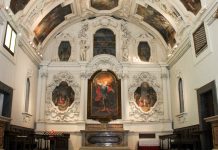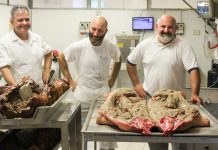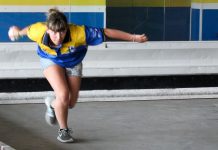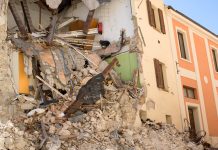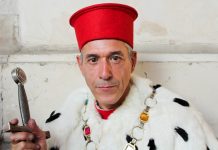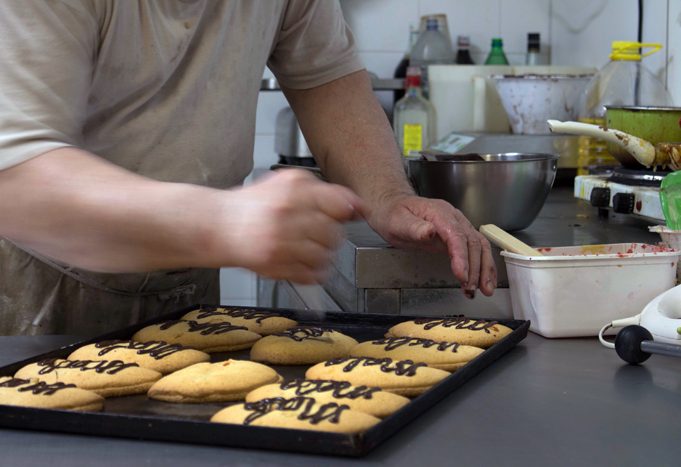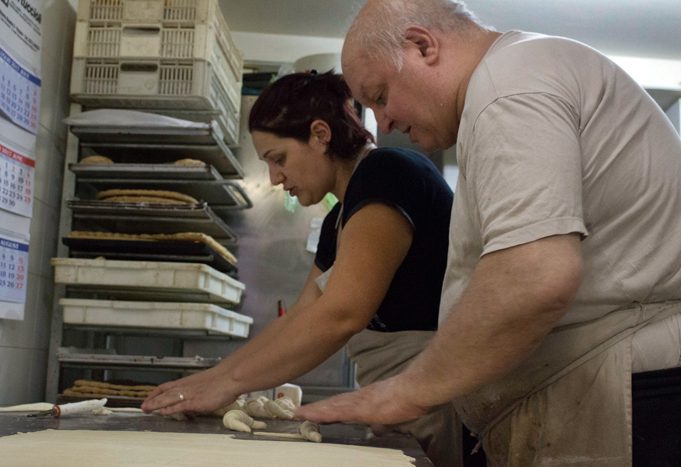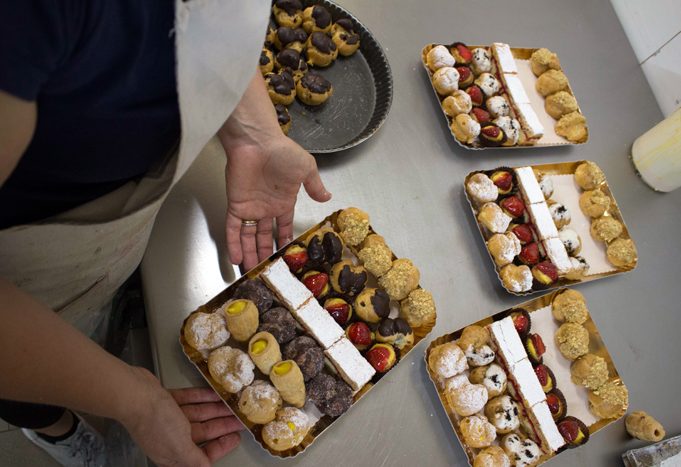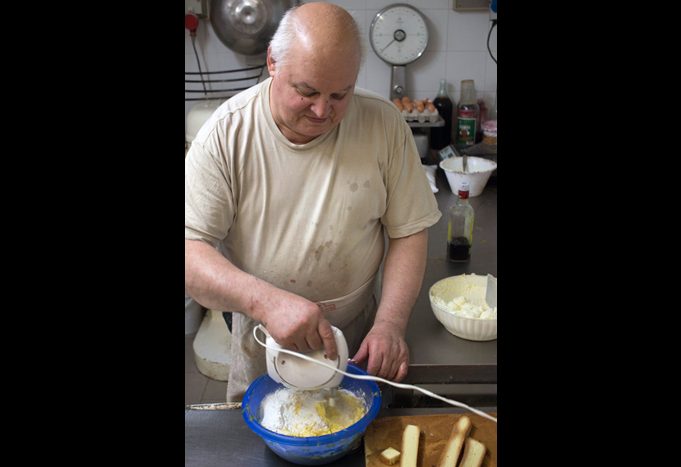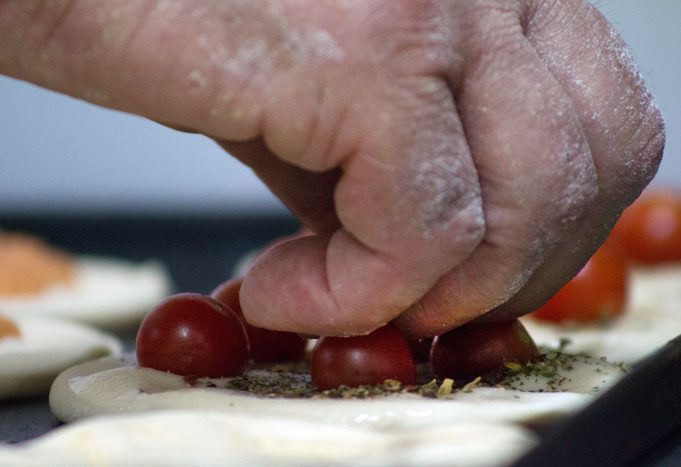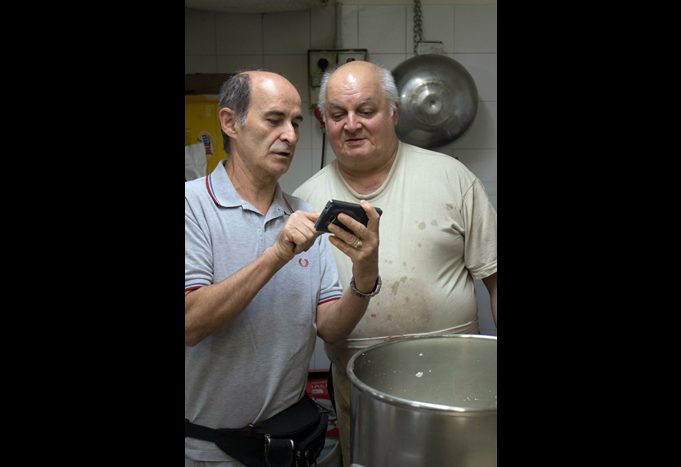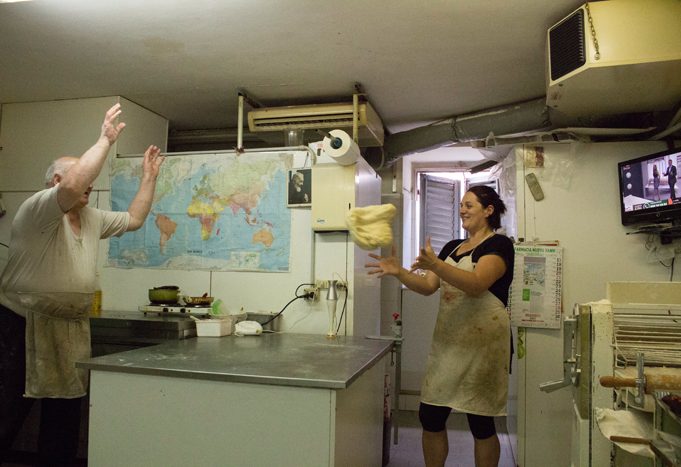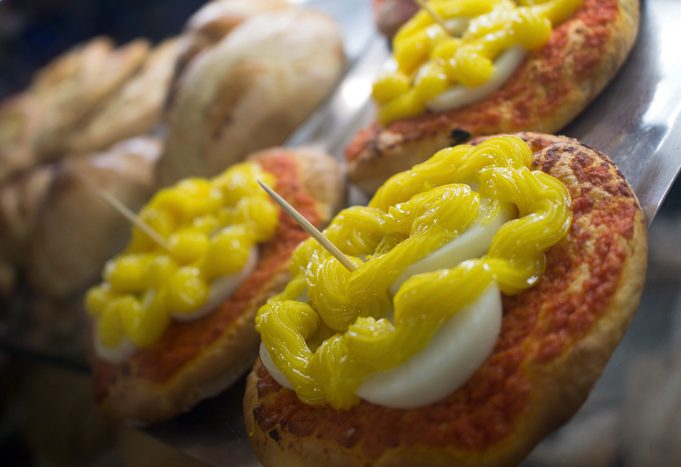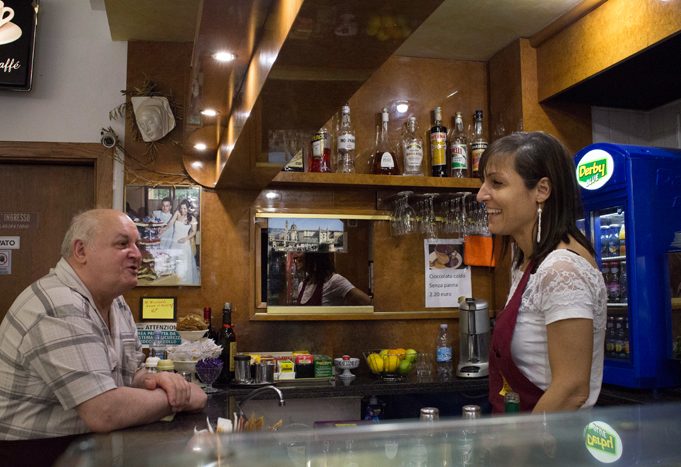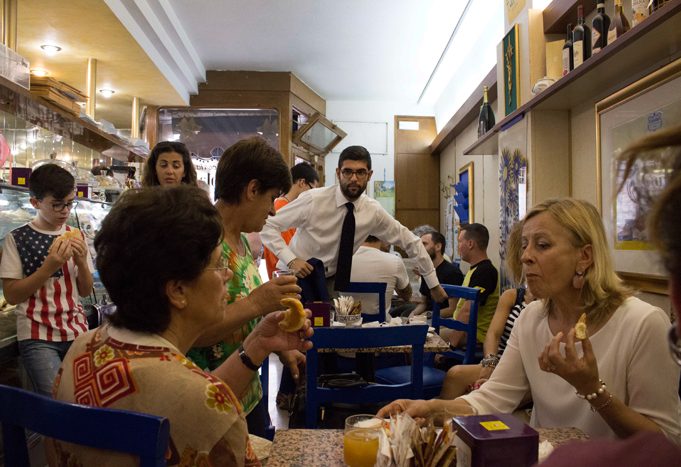Baker Leonardo Cartolari’s pastries are works of art
URBINO, Italy – Via Raffaello is a relentlessly steep street in this hillside city named for the famed Renaissance artist who called it home as a child. Today a different artist resides here.
Leonardo Cartolari doesn’t work with paint. Sugar and flour are his medium, his hands are his brush, and an oven is his canvas. With passion and a love for his craft, Cartolari rises before the sun to create his art. From five in the morning until noon, he paints with chocolate, carves from dough, sculpts with pastry cream and forms delicate creations to sell from his bakery, Caffe Pasticceria.
At 66, Cartolari is a big friendly bear of a man, towering behind the shelves of his bakery, overhead lights reflecting off his nearly hairless head. He greets visitors with a toothless smile, and warm eyes.

And every day his showroom is jammed by customers eager to purchase creations from one of Urbino’s best-selling artists.
“I love making with my hands,” he says. “It’s not hard for me. Sometimes I am tired, but I do it willingly.”
Thirty-seven years ago, no one could have foreseen a farm boy from the coast of Pesaro creating one of the most beloved pastry shops in Urbino. But while Cartolari came from a world of tending chickens and milking cows, he was destined to create.
I am the son of farmers, and I wanted to emerge. This work is what allowed me to emerge.
As a child, he and his friends would craft toys of sticks and carve playing cards from wood. When he was 14 his parents helped arrange a job where he could use his hands – as a helper under Pesaro baker Serafini Paolo.
“I am the son of farmers, and I wanted to emerge,” Cartolari says. “This work is what allowed me to emerge.”
“My parents did not try to stop me, but they worried for me. They would ask, ‘Can you make it, can you make it?’”
Young Cartolari kept his eyes open and learned from Paolo.
“You steal with your eyes when learning to bake,” Cartolari says, rubbing the tips of his fingers together as if he can feel the pastry dough he remembers. “You see people do things, you see how they do it, you try and see that you can do it yourself, and slowly you learn.”
The idea of moving to Urbino was born during those years in Pesaro.

Cartolari often wondered why people consistently traveled from the hillside city of Urbino to his seaside town to order cakes and pastries. When he learned there wasn’t a pastry shop in Urbino, he saw the opportunity to build a legacy.
“Urbino, Urbino, I am so lucky to have made it here,” he says. “People come from all over and they remember me.”
In 1980, he made the move to Via Raffaello 52. It’s just a two-story, 15-by-45-foot, hole-in-the-wall shop that acts as both his studio and gallery.
But walking inside is like stepping into a jewelry box of baked goods.
The right side of the shop is lined with glass cases displaying rows of pastries, cookies, tarts and pies. Cartolari’s daughter Silvia and wife Sofia manage the café downstairs, greeting regulars, pouring coffees and serving pastries.
The little space bustles each morning with customers selecting among the edible works of art, enjoying a morning espresso and greeting each other with a hearty “Buongiorno!” or “Ciao!” Some stand at the three-foot-long bar and chat briefly before darting off to work. Others grab a paper and claim a seat at one of the four, small tables, never being asked to leave by one of the Cartolaris.
The back of the shop hides a staircase that leads to the magic being made above.
The space, illuminated by a single window whose green shutters are thrown open, is dominated by the heat of the five-foot wide doors of a walk-in oven. Old but reliable baking equipment surround the stainless-steel counters where Cartolari and his assistant Francesca Poggispalla maneuver and operate as one.

“Our relationship is not as a worker and boss, it is as friends, as companions,” Poggispalla says of their 10 years together, with Cartolari beaming a toothless grin her way.
The sweet aroma and repetitive thump of dough rolling in Cartolari’s 34-year-old bread mixer is constant background music as they create edible art each day.
They stack layers of colorful Zuppa Inglese (sweet, cake filled pastries); roll dough for hand-sized pizzettas, squeeze marmalade onto small, star-shaped cookies made of pasta frolla, a sugary yellow dough, and pump pastry shells full of coffee-flavored and hazelnut creams.
Frutta tarta (fruit tarts) shine with kiwis and strawberries. Chocolate and marmalade croissants are sprinkled with coats of powdered sugar.
The works of art created upstairs are delivered down to Silvia and Sofia via a dumb waiter then placed into the display cases.
Cartolari comes down to what is his gallery at noon each day, changes his stained, white t-shirt for a striped, button-up polo, wraps an apron amid his ample waist, and takes over for Sofia and Silvia behind the counter.
“He is always here, night and day,” Sylvia says. “He can’t stay away from the bakery shop.”
Standing like a friendly giant among the savory and sweet creations, a warmth – a pride – radiates from him.
“I wasn’t missing anything before, but I wanted to be up there, with the eagles, not down below among the chickens” he says.
And for the past 37 years, Cartolari has flown those skies.
“Doing something that is my own is very beautiful,” he says. “As long as Christ keeps me on this Earth, I will remain baking.”




